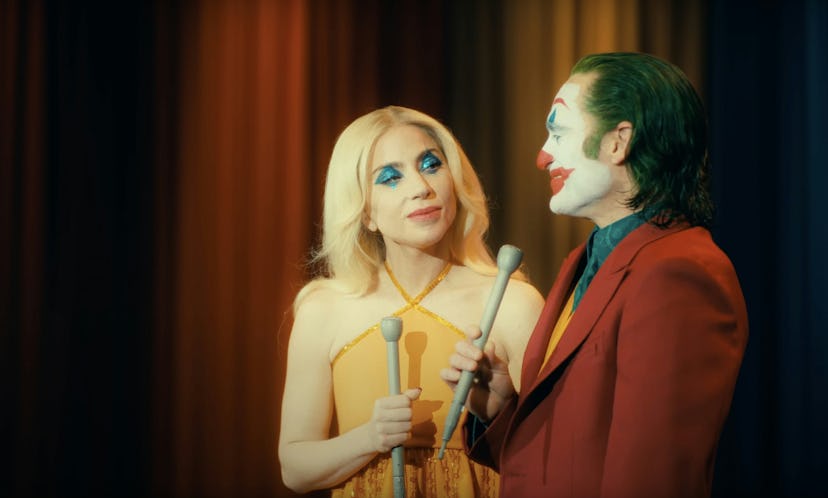Beauty Screener
Behind The Sinister Clown Makeup In Joker: Folie à Deux
In an exclusive interview, makeup designer Nicki Ledermann reveals how she created the infamous villain’s signature look.

No matter how insidious he is, Joker’s nothing without his makeup. In 2019’s Joker, Arthur Fleck, played by Joaquin Phoenix, is a working clown whose mental anguish eventually leads him to become the infamous villain wreaking havoc in Gotham City. While the face paint he wears for his day job is that of a more typical jester, Fleck would only be half the evil character he becomes without the help of cosmetics.
On Oct. 4, the sequel — Joker: Folie à Deux — brings the character back to the screen, where he faces the consequences of his actions in the original film. This time, however, viewers won’t see Fleck as a non-evil clown — only as the Joker. So makeup designer Nicki Ledermann (who also worked on Joker) had to ensure the villain’s signature uncanny look remained the same — especially because he’s fully submitted to his criminal tendencies.
Of course, the famous villain has been portrayed in numerous films by stars like Jack Nicholson, Heath Ledger, and Jared Leto. At a glance, his face is generally the same: ghostly white with an extended evil smile painted red. But each has its nuances. For Fleck, for example, Ledermann wanted a look that was classic with a twist.
Creating The Clown
“When you look at the production and costume design of Joker, it’s very classic,” Ledermann tells Bustle. “There are so many different styles of clown makeup and so many books that all have different clowns in them, and they’re all copywritten, so you can’t use any of them. We had to work hard with the studio to make sure we came up with a look that was not copywritten that we could use or alter. We came up with a classic Italian opera clown and morphed it into ours, which then turned into Joker as the working clown.”
To become the criminal Fleck, who you see in the second film, Ledermann transformed the opera clown into a “more grotesque” version with a subtle yet impactful makeup tweak. “We used the same colors and same design, but instead of having it symmetric, we made it asymmetric,” she says. “Instead of clean lines, we made crooked lines. And instead of framing and outlining the mouth with black, we left the black out. It was weird how that became a really grotesque iteration of the same thing.”
The Products That Made The Joker
For the look, Ledermann relied on M.A.C. Cosmetics, especially the Chromacakes pigments. “The white was mixed with a bit of water and just brushed all over [Phoenix’s] face, and that was the most important part because it couldn't be perfect — it needed to look a little streaky,” she says. “Then I mixed the Chromacakes blue and green together to get that perfect blue that I like, and I mixed the red with a little black to get that nice, deep, dark red for his nose and mouth.” [Editors’ note: Not all of the colors are listed online, but they are available for special order and in M.A.C. stores.]
One major difference you’ll see in the sequel is the introduction of Joker’s love interest, Harley Quinn, played by Lady Gaga — a character whose look mirrors Joker’s in that it involves a powder-white face, red mouth, and opera clown-like eye makeup.
Perfectly Imperfect
For both characters, Ledermann’s approach was all about imperfection. “I like to call it ninja-style makeup, where you just go and do it quickly — you don’t overthink it,” she says. “If you spend a lot of time on it, it becomes too perfect with too much thought behind it, and we didn’t want that.” Plus, the characters themselves aren’t the kind to spend much time painting their faces — and Ledermann (who worked with makeup artist Sarah Tanno on Gaga’s makeup) wanted their looks to reflect that. In fact, she says it typically took just 20 minutes to transform Phoenix into the Joker.
Despite the speed, Ledermann admits the authenticity of the makeup in the film was a challenge in its own right. “Sometimes you see a movie where everything is so perfect, but with this one, it needed to be relatable, realistic, and organic,” she says. “It needed to look like these characters did the makeup themselves, so in terms of that, it was a learning curve. But it was also very liberating.”